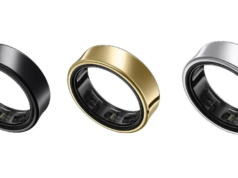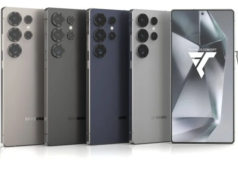Samsung is gearing up to launch the Galaxy S25 and Galaxy S25+ with a vibrant and updated color palette. Recent leaks have shed light on the design details, offering a glimpse of the color options through images of the phones’ SIM trays. These new hues hint at a refreshed aesthetic for Samsung’s upcoming flagship models, creating excitement among fans eagerly anticipating the launch.
The leaked SIM tray photos reveal five distinct colors: Black, Green, Purple, Blue, and White. Although these images provide a clear view of the paint jobs, the exact marketing names for these colors remain unconfirmed. Nevertheless, the photos offer enough detail to fuel speculation about Samsung’s design direction for its next-generation devices.
Breaking Down the Color Options
The black variant appears to be a potential dark gray, though this interpretation isn’t entirely certain. Meanwhile, the blue color option stands out as one of the deepest shades Samsung has ever featured on its Galaxy S series, offering a bold new look. These darker tones lend a sophisticated feel to the lineup, appealing to users who prefer understated elegance.



On the other hand, the green and purple variants are said to take inspiration from nature. The green shade resembles mint leaves, while the purple hue draws from the delicate tones of violet plants. These choices suggest Samsung is leaning into softer, pastel-inspired tones to attract users looking for more distinctive and trendy designs. As expected, the white variant maintains a classic and minimalistic appearance, catering to fans of timeless simplicity.
Differences from Analyst Predictions
Interestingly, the revealed colors don’t entirely align with earlier predictions by industry analysts. Previous reports suggested a different set of names and themes for the Galaxy S25 and S25+ models, making these leaks particularly intriguing. While the exact discrepancy remains unclear, the new color scheme seems to reflect Samsung’s evolving design philosophy, with an emphasis on both vibrant and muted tones to cater to a wider audience.
These variations further highlight the brand’s effort to differentiate the S25 and S25+ from their predecessors and position them as stylish and modern flagship devices. The leaks also suggest that Samsung is moving away from generic color options to embrace more nuanced and intentional design choices, adding a fresh dimension to its flagship lineup.
The S25 Ultra: A Different Approach
While the Galaxy S25 and S25+ are set to boast an array of colorful options, the Galaxy S25 Ultra appears to take a more subdued approach. Reports suggest the Ultra model will feature a titanium frame, likely sticking to a less colorful palette. This aligns with Samsung’s strategy of positioning the Ultra variant as the most premium and professional option within the Galaxy S series, appealing to users who prioritize durability and functionality over bold aesthetics.


The contrast between the S25/S25+ and the Ultra model reflects Samsung’s commitment to offering diverse choices within its flagship range. Whether users prefer vibrant designs or understated elegance, the Galaxy S25 lineup seems poised to deliver options that suit varying tastes and preferences.
A Fresh Look for Samsung’s Flagship Lineup
The leaked SIM tray photos for the Galaxy S25 and S25+ have provided an early look at Samsung’s revamped color options, showcasing a mix of bold, trendy, and classic tones. With shades like deep blue, mint-inspired green, and violet-inspired purple, Samsung is clearly aiming to make the Galaxy S25 series visually appealing to a broad audience.
These new color options, combined with the company’s innovative design and hardware features, are likely to generate significant buzz ahead of the official launch. While the exact marketing names and additional design details remain under wraps, the leaks suggest that the Galaxy S25 and S25+ will bring a fresh aesthetic to Samsung’s flagship lineup. As the launch date approaches, fans can expect more updates and a closer look at what Samsung has in store for its next-generation devices.






